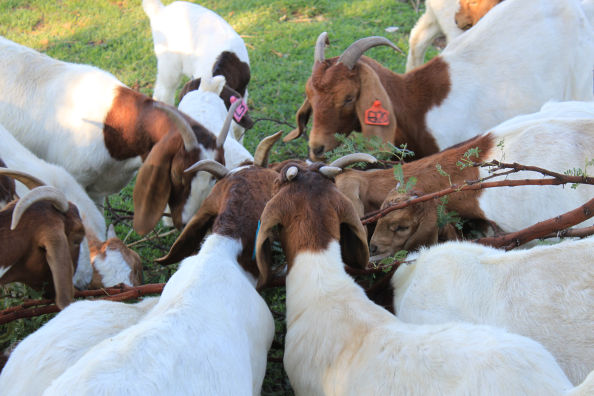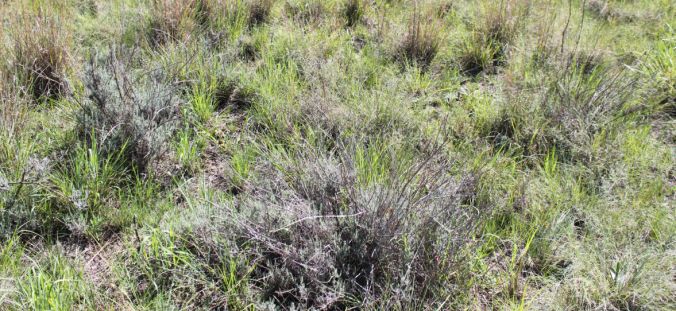Do goats like trees? Of course they do! And in particular they like Sweet Thorn (acacia karroo). Fresh leaves contain 12% protein and a lot of calcium and phosphorus, and the pods are even more protein rich.
I am establishing Sweet Thorn all over the farm as part of my Silvopasture project. The pictures below are of goats devouring the leaves from branches pruned from Sweet Thorn trees growing in our garden.
I prune off all of the bottom branches so the trees grow tall and spread to become shady, and the cuttings are fed to the goats.The tree below is about 5 years old. If the goats were allowed to graze the trees, they would clean off the bottom branches without my help, but there are fruit trees in the same area which would be equally pruned. The trees are full of pods after the drought a few months earlier, so I will have plenty of seeds to make seedlings from.

The pruned branches cause a feeding frenzy amongst the adults. How they manage to nibble between the thorns is quite a talent.

And the kids nibble off everything that is left.


Once the branches are dry I will use them for firewood, or use them to keep chickens out of vegetables (the thorns help).
More Information
Acacia Karroo – A sweet and thorny thing
Sweet Thorn Leaves Nutritional Value
Long-Term Impacts of Goat Browsing on Bush-Clump Dynamics in a Semi-Arid Subtropical Savanna










